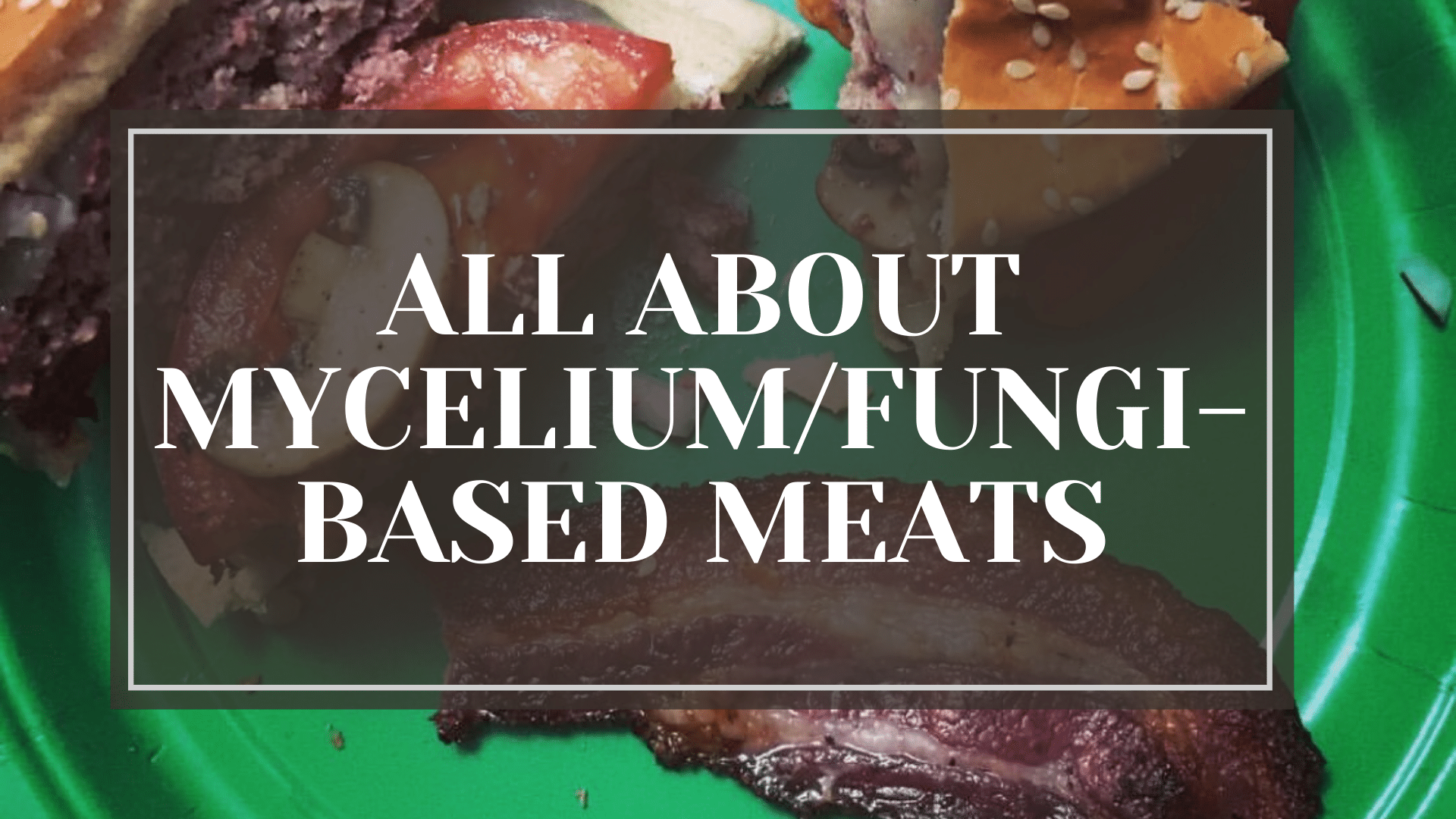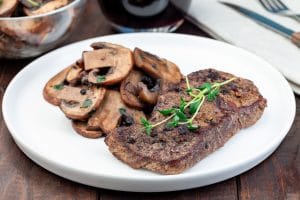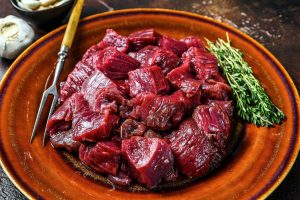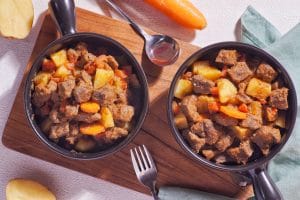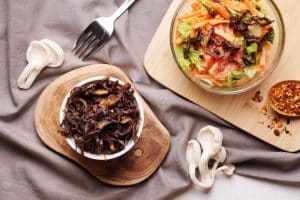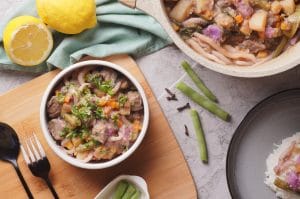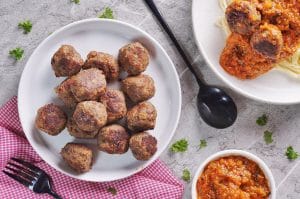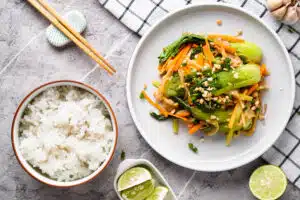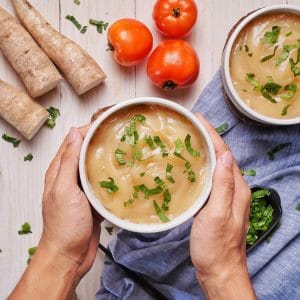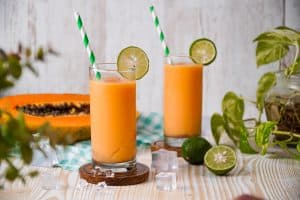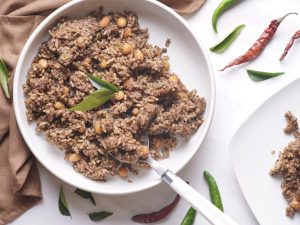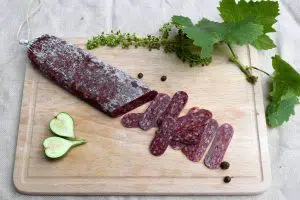All About Mycelium / Fungi-Based Meats
Important Note: When you buy through our links, we may earn a commission. As an Amazon Associate we earn from qualifying purchases. Content, pricing, offers and availability are subject to change at any time - more info.
Companies react to rising customer demand for meatless alternatives by developing innovative products that do not require cattle or land. On the other hand, plants aren’t the only meat replacements that researchers are looking into as a possible meat substitute. Fungi-based meat is one of the newer options being pursued by a growing number of businesses.
Mycelium-based/fungi-based meats are growing to be more and more popular as a vegan or vegetarian meat substitute. Due to their low production cost, high nutritional value, and low processing requirements make for a much better meat substitute. The texture is also closer to that of normal meat.
But what exactly is mycelium-based meat? And why should people choose it over plant-based meat alternatives? Let’s take a look at everything you should know about fungi-based meats.
- What Is Mycelium?
- Why Is Mycelium Being Used As An Alternative To Meat?
- How Is Mycelium-Based Meat Made?
- Fungi-Based VS Plant-Based
- What Are The Benefits Of Fungi-Based Products?
- How To Cook With Mushrooms As A Replacement For Meat
- The Best Kind Of Mushrooms For Every Kind Of Meat
- All You Need To Know About Mycelium/Fungi-Based Meats
What Is Mycelium?
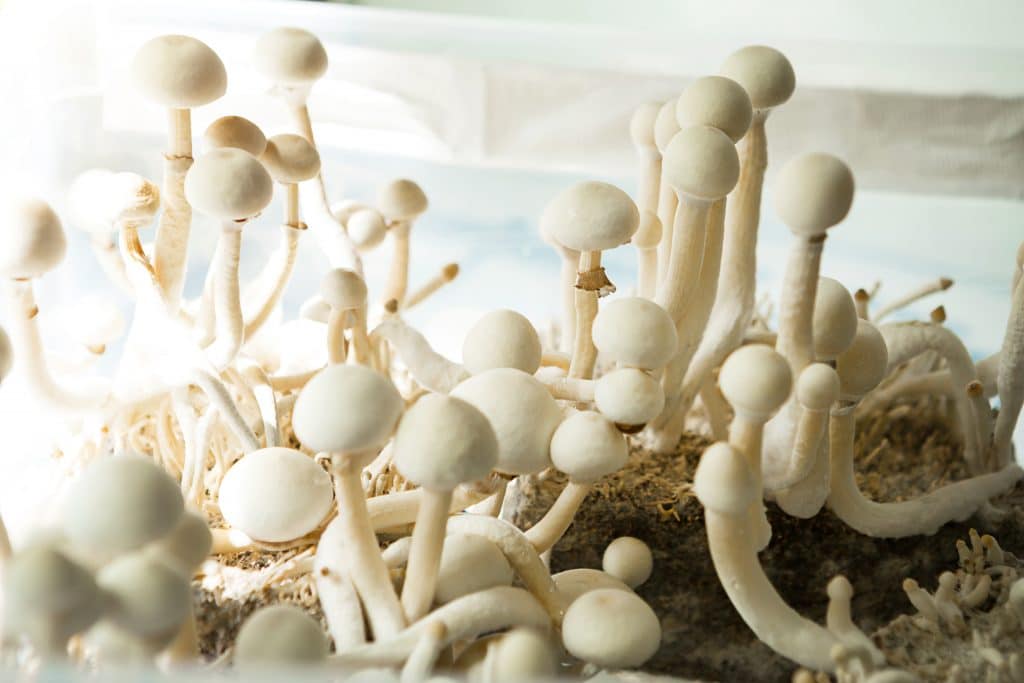
Mycelium is a mass of branching, thread-like hyphae that make up the vegetative component of a fungus or fungal-like bacterial colony. Shiro is a term used to describe a mass of hyphae, particularly in fairy ring fungus.
Mycelium-based fungal colonies can be found in and on soil and a variety of different substrates. Depending on the environmental conditions, not all mycelia will produce mushrooms. However, all mushrooms arise from mycelia.
Why Is Mycelium Being Used As An Alternative To Meat?

The flavor and texture of fungi-based meat are identical to those of succulent, delectable meat. The advantage is that mycelium-based meat is low-impact on the environment and has the nutritional advantages of mushrooms.
The fungal tissue culture technique may create complex structures that mimic meat’s fibrous and delicate qualities using only a few components. Producers may adjust mycelial matrices’ highly flexible filamentous structure to generate textures that are akin to meat.
While many plant-based meat alternatives are highly processed, mycelium-based meat does not require a heavy amount of processing. As we all know, the less processed a product is, the better it is for overall health and nutrition.
How Is Mycelium-Based Meat Made?
Fungi-based meats are mostly made in the laboratory, bypassing agriculture nearly entirely. Mycelium, the vegetative section of a fungus made up of branching, thread-like fibers, is the most important component.
Producers grow their mycelium in enormous tanks, supplementing it with sugar and other nutrients to aid growth. It’s chopped and seasoned to look like meat once it’s been gathered.
Compared to traditional plant-based meat, the procedure takes less time and consumes fewer resources. This fungi-based protein has a better conversion efficiency of raw material into protein than any other natural system.
As mentioned before, mycelium-based meat is fairly unprocessed, meaning it is cheaper to produce than plant-based meat. This makes it a more budget-friendly and accessible alternative to actual meat.
Fungi-Based VS Plant-Based
Fungi-based foods are classified as plant-based foods by the United States Food and Drug Administration (FDA). Many people feel that fungi-based meat is better than plant-based meat since it has more nutrients and contains fewer additives.
You cannot compare the filaments and matrix of plant-based meat to those of fungi-based meat. Concerns about traditional agriculture’s environmental effect and prices will continue to enhance the fungi-based and plant-based meat businesses.
According to the American Heart Association (AHA), eating more plant protein instead of meat may enhance heart health. On the other hand, some plant-based goods may include fillers and salt, as well as saturated fats.
Plant-based meats may also be deficient in zinc and other micronutrients compared to traditional meat. Fungi-based meats are less processed and contain more nutrients than their plant-based counterparts.
What Are The Benefits Of Fungi-Based Products?
There are many benefits of using mycelium as an alternative to both plant-based meat alternatives and actual meat.
Better Nutritional Value Than Plant-Based Products
Mushrooms have a nutritional value that is closer to that of meat than that of a plant. Therefore they include numerous nutrients that are difficult to come by or are absent from a vegan diet.
Contains All Nine Essential Amino Acids
Mushrooms may not provide a large amount of protein, but they contain all nine necessary amino acids (EAAs). Many EEAs are lacking in plant-based proteins.
Mushrooms also contain many branched-chain amino acids (BCAAs), often found solely in animal-based protein sources.
Mushroom proteins are comparable to the protein quality found in animal-derived protein sources, such as protein powders, and are virtually identical to the protein quality found in meat.
Great Source Of Vitamins And Minerals
Vitamin D is extremely necessary but is usually not very easy to obtain during the winter months.
Long-term vitamin D deficiency can cause various issues, from weak and brittle bones to a weakened immune system. From this information, you can tell that vitamin D is essential, and luckily, mycelium-based meat contains plenty of it.
Depending on the variety, mushrooms are a great source of large quantities of the Vitamin B group, specifically:
- Vitamin B-1
- Vitamin B-2
- Vitamin B-3
- Vitamin B-5
- Vitamin B-9
Mycelium-based goods may also contain minerals that are difficult to get from a vegan diet, such as selenium, potassium, copper, iron, and phosphorus, depending on the variation.
Other health benefit studies suggest that mushrooms may boost the human immune system. These nutritional benefits are helpful in assisting the body to fight off infections, and recent studies show that people with boosted immune systems are less susceptible to cancer and other chronic illnesses.
Reduces Carbon Emissions
Meat-free proteins like soy, pea protein, and mushrooms are healthier for the environment than farmed meat, which is a major cause of biodiversity loss due to methane emissions from grazing animals.
The Carbon Trust evaluated the carbon footprint of mycoprotein products to that of other animal and plant-based protein sources in July.
Beef mince has the biggest carbon footprint, whereas soybeans have the smallest. Research determined the carbon footprints of mycelium-based goods to be rather low due to the decreased need for processing.
With the world’s population expected to reach 9.8 billion by 2050, these foods may be useful in addressing food scarcity in the future years. We should all rethink food production and consumption if we are to have a sustainable future.
How To Cook With Mushrooms As A Replacement For Meat
Mushrooms have a flavor called umami that is incredibly pleasant, making them great for adding to spaghetti sauce to keep the rich flavor and texture while lowering or removing the meat content.
Replace a quarter to half of the meat in recipes with a lot of meat with mushrooms to produce a dish that’s lower in calories but still delicious.
You can use specific mushrooms to replace a specific type of meat. This is a cheap way to essentially make your own mycelium-based meats in the comfort of your own home. As a bonus, it’s tasty and healthy!
The Best Kind Of Mushrooms For Every Kind Of Meat
Knowing what sorts of mushrooms to use as meat substitutes in typical meat dishes is the key to finishing your savory dish.
You may simply switch out mycelium-based substitutes (mushrooms) in some of your favorite dishes once you know which species complement your meal.
Portobello Mushrooms
Best used as a substitute for beef or steak.
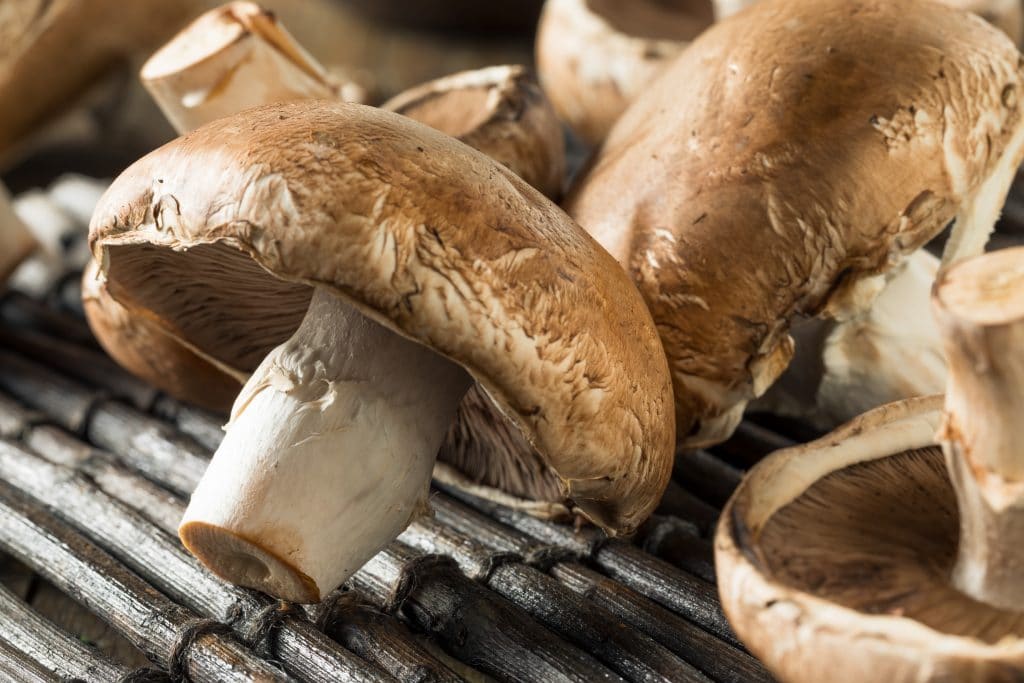
The portobello mushroom is recognized for its taste profile variety, huge size, and robust texture. Because it is both accessible and inexpensive, it is well-known and widely utilized in the plant-based community!
The portobello mushroom is versatile in that it may be eaten whole or chopped into smaller pieces. It is perfect for grilling or baking. Vegans or vegetarians may use it to make sliders, or it can be seasoned and eaten whole as a mushroom steak.
This mushroom absorbs a lot of flavors and will take on the taste of anything you marinade it in!
Shiitake Mushrooms
Best used as a substitute for pork or turkey.
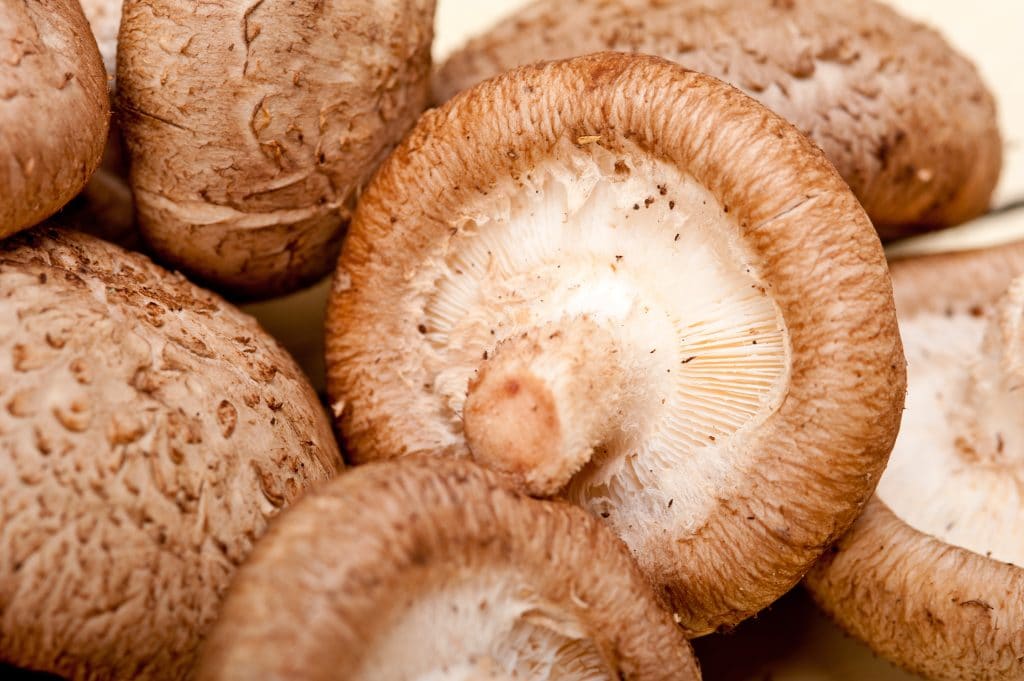
Shiitake mushrooms are easily identified by their distinctive cream color and delicate shape. For the greatest results, use the shiitake mushroom when it is still extremely fresh, which can be bought in most grocery shops.
The earthy taste of the shiitake mushroom is distinctive.
The Shiitake mushroom is frequently underutilized, thanks to its peculiar flavor. People may not appreciate this mushroom’s amazing potential if it is combined with elements that conflict.
This mushroom’s taste is enhanced by sautéing or sweating it. Fresh herbs or spices, as well as Asian seasoning, go a great way in enhancing this unique mushroom.
Baby Bellas Mushrooms
Best used as a substitute for beef or chicken.
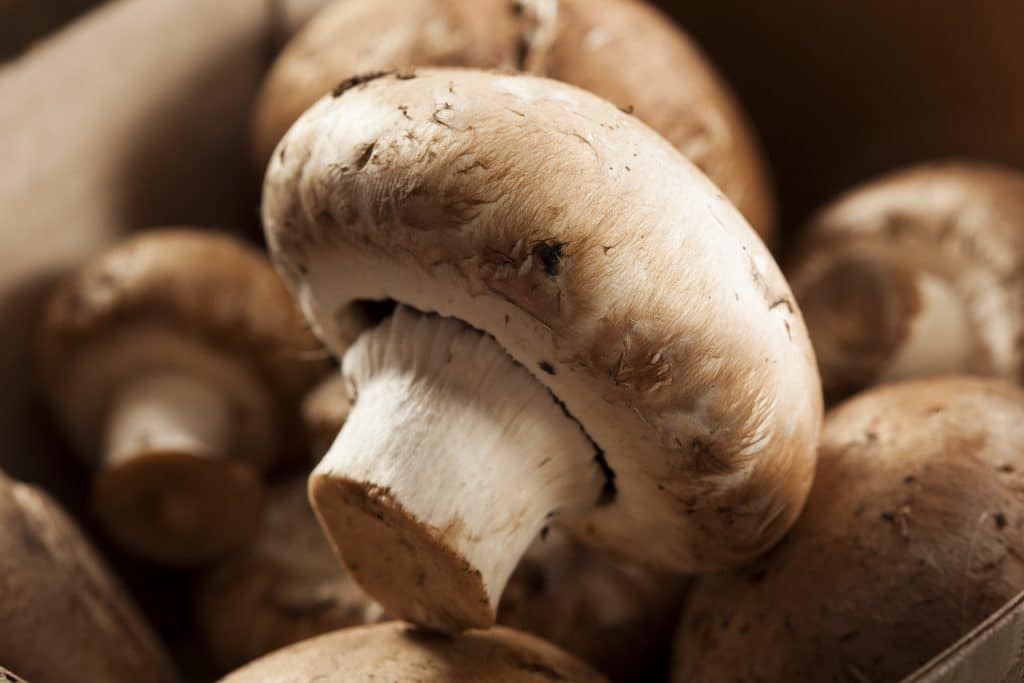
Although botanically similar to Portobellos, I believe there is a significant variation in texture, shape, and size for these “baby Bellas.” These mushrooms look remarkably identical to Portobellos when sold next to them but are considerably smaller.
The incredibly rich flavor and buttery texture of these delectable delicacies are well-known. You may eat them whole or split up. You may also change the breadth of your cutting to get the texture and softness you want.
The baby Bellas are delicious cooked in plant-based butter or olive oil, grilled, and can keep their shape in a soup or stew for a long time! Baby Bellas are a versatile fungus that may easily be used in place of meat.
Warm sauce recipes bring out the crimini’s greatest qualities. In a vegetable and mushroom soup or a mushroom bourguignon, the crimini is delightfully rich and savory, chopped or whole.
They’re also delicious in vegan stroganoff and alfredo dishes. Serve them with a sweet root vegetable in a mushroom risotto or marsala.
White Button Mushrooms
Best used as a substitute for chicken.

A person’s first introduction to mushrooms is generally the white button mushroom. The white button mushroom is the simplest and most cheap mushroom to locate in your local grocery shop.
The nicest part about this mushroom is that it has a moderate flavor that allows it to be used in a variety of situations. However, because of its delicate nature, it cooks rapidly.
There’s not much you can’t do with these little treats. They seem like the typical mushroom you’d find on a vegan pizza or tossed into a marinara sauce, but they’re capable of so much more.
These mushrooms cook quickly, are easy to get, and taste great in practically any dish. They’re especially good in mild or light sauces.
Chanterelle Mushrooms
Best used as a substitute for Crab.

If you haven’t eaten chanterelles yet, you should definitely add them to your culinary bucket list! These woodland diamonds are both uncommon and expensive, but they are well worth your time and money.
If you don’t live in a town or city where these mushrooms are common, you’ll have to find a very knowledgeable local mushroom forager, but you should be able to find them throughout the late fall and winter seasons. These would make a lovely accent to a formal holiday meal.
They have a distinct flavor that is rich, sweet, and nutty. Their cooking range is a little limited, so if you buy them, make sure you do your homework and locate a solid recipe that includes suitable cleaning and cooking directions.
Enokitake Mushrooms
Best used as a substitute for Whitefish.
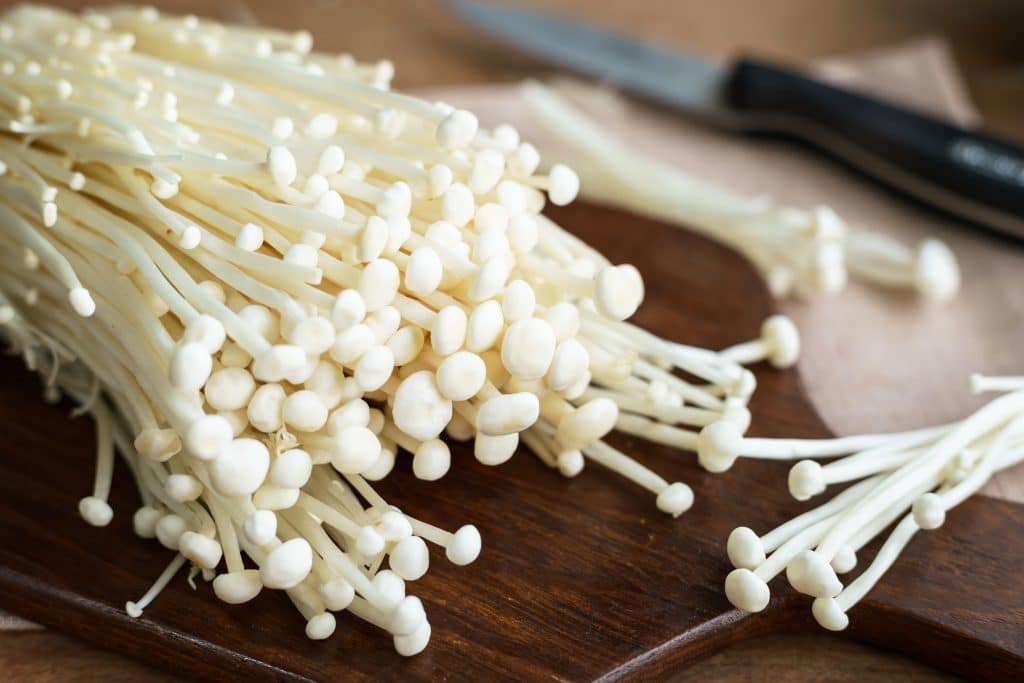
The long noodle-like characteristic of enoki mushrooms makes them easily identifiable. They are almost translucent in hue and are frequently marketed as a cluster. They have a delightful noodle-like texture and a mild taste.
You may find them in your produce area when they’re in season, but you can also locate them at a farmer’s market or an Asian market. Depending on what you’re planning to do with them, they’re sold dry or fresh.
These little plant protein substitutes are nutrient-dense and vitamin-dense. Enoki mushrooms can be eaten fresh, boiled, mildly seasoned, or sautéed.
These are a fantastic compliment to any east Asian meal. You might recognize them as the secret ingredient in your pho or as a salad garnish!
All You Need To Know About Mycelium/Fungi-Based Meats
To summarize all of this information, mycelium-based meats are growing more popular as a meat substitute. Mycelium-based foods are essentially more nutritious than plant-based meat, as they contain more vitamins and minerals.
Companies who are working to increase the popularity of these products claim that fungi-based meat tastes more like actual meat than any other meatless alternative. Why not find out for yourself?
